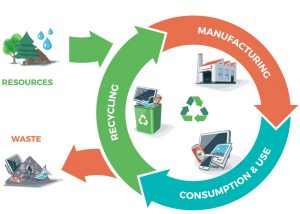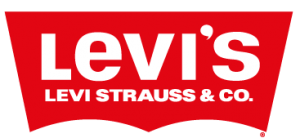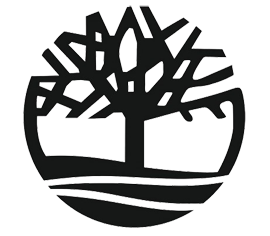Zero Waste + Circular Economics = Business Success
From food to clothing to electronics, in a zero-waste world, nothing is wasted, and everything is reusable. If that sounds like science fiction, try thinking of zero as the ideal rather than the target. The goal behind the zero-waste philosophy is to make adjustments to your business practices and personal lifestyle to conserve and recover resources rather than squander them as if they are unlimited.
Imagine a world where there is no garbage
Zero-waste grocery stores ask customers to bring their own reusable shopping bags and containers for food that is dispensed without packaging. Products are available in bulk, and shoppers buy only what they need. If you want three eggs, you don’t have to buy a dozen. If your recipe requires a half pound of butter, you don’t have to buy a pound. Popular in Europe for some time, zero waste stores are beginning to pop up in the United States.
If that sounds extreme, you can begin with baby steps at your regular shopping destinations. Bring reusable shopping bags and avoid over-packaged foods and single-serve containers. Buy large-sized containers in recyclable packaging rather than convenience-sized items. Shop at your local Farmers Market. Bring your own coffee mug when you stop for your morning cup of java. As each step becomes a habit, you can take your next small step.
While individual actions play an important role in reducing waste, it is also important for businesses to find ways to make better use of resources and materials.
Close the loop on waste
With sustainability and green business initiatives already part of many business models, now is the time to dig deeper to uncover the efficiency of circular economics. Traditionally businesses run on a linear model based on “take, make and dispose.” In a linear model, a company acquires the necessary resources to make and distribute its products to consumers who understand that when the product is used up, it will be thrown away and replaced with a new product. The flaw in this model is the assumption that you are running your business in a world with unlimited resources and problem-free disposal of waste.
 In reality, resources are limited, and disposal of used-up resources is increasingly complex and expensive. In a circular economy, businesses rethink their assumption that the road to financial success moves in a straight line from beginning to end. Instead, they create a plan that circles back and closes the loop at the point it began. Instead of operating “cradle to grave,” the new mentality is to operate “cradle to cradle.”
In reality, resources are limited, and disposal of used-up resources is increasingly complex and expensive. In a circular economy, businesses rethink their assumption that the road to financial success moves in a straight line from beginning to end. Instead, they create a plan that circles back and closes the loop at the point it began. Instead of operating “cradle to grave,” the new mentality is to operate “cradle to cradle.”
Take, for example, your cell phone. Many cellular contract plans are based on a two-year cycle that encourages you to dispose of your old phone and begin your next two-year term with the latest model. This represents a linear business model. When electronics are built to last longer or have components that can be reclaimed and recycled into the next generation of phones, a circular economy starts to emerge.
In a circular economy, the producer plans to get more out of their resources to make a product that lasts or one that can be fixed or recycled into other uses. In addition, companies shift from fossil fuels to renewable energy and seek out creative solutions to augment the bottom line.
Three real-life examples include Levi Strauss & Co., Timberland and Dell:
 Based on the knowledge that 24 billion pounds of clothing, shoes and textiles end up in landfills, Levi’s stores are collecting old clothes and shoes and working with a partner to transform cast-offs into building insulation, cushioning and new fiber. The company is also working to recycle old blue jeans into new ones.
Based on the knowledge that 24 billion pounds of clothing, shoes and textiles end up in landfills, Levi’s stores are collecting old clothes and shoes and working with a partner to transform cast-offs into building insulation, cushioning and new fiber. The company is also working to recycle old blue jeans into new ones.
 Shoemakers and tire manufacturers are major users of rubber in the U.S. To that end, Timberland has partnered with a tire manufacturer to engineer a line of recyclable tires. At the end of the tire’s useful life, it will be broken down and manufactured into soles for a line of Timberland footwear.
Shoemakers and tire manufacturers are major users of rubber in the U.S. To that end, Timberland has partnered with a tire manufacturer to engineer a line of recyclable tires. At the end of the tire’s useful life, it will be broken down and manufactured into soles for a line of Timberland footwear.
 Dell has made great strides toward working within a closed-loop supply chain in which it recycles and re-purposes the plastics and carbon fiber materials from its electronic products. The company has used post-consumer recycled plastics in its desktops since 2008 and recently beat its 2020 goal of incorporating 50 million pounds of recycled materials into its products. The company just announced its first shipment of products with packaging trays made of 25% recycled ocean plastics and 75% recycled HDPE plastics.
Dell has made great strides toward working within a closed-loop supply chain in which it recycles and re-purposes the plastics and carbon fiber materials from its electronic products. The company has used post-consumer recycled plastics in its desktops since 2008 and recently beat its 2020 goal of incorporating 50 million pounds of recycled materials into its products. The company just announced its first shipment of products with packaging trays made of 25% recycled ocean plastics and 75% recycled HDPE plastics.
Dell is a member of the Circular Economy 100, an international program sponsored by the Ellen MacArthur Foundation, to bring together corporations, governments and cities, academic institutions, emerging innovators and others to encourage, educate, collaborate and expand circular economic opportunities around the globe. Other U.S. members include Walmart, Dow Chemical, Steelcase, Coca-Cola, ebay, the City of Phoenix and Rochester Institute of Technology, to name a few.
Improve the bottom line
Transitioning to circular economics requires a new business model with new priorities. While profit may no longer be the only goal, effective use of circular planning is likely to improve the bottom line. With conscientious use of resources, companies are less dependent on unpredictable commodity prices. By rethinking manufacturing processes, they find ways to extract and re-purpose chemicals or eliminate them from the waste stream altogether. An added benefit is lower waste removal costs. Another way to minimize waste is to work with suppliers that echo the values you strive to achieve.
It’s good for PR, too. Levi Strauss found a way to remove up to 96% of the water they once used in their denim-finishing process. They parlayed their achievement into a marketing campaign that proudly promotes their “Water<Less” product line and includes tips for how their customers can use less water.
Given limited resources, rising material costs and consumer demand for sustainability practices, the circular economy is the economic wave of the future. Companies that achieve a circular economy business model produce high-quality products from which they earn long-term profits.
The circular economy leads companies to evolve and transform themselves in ways that will lead to present and future benefits. By producing high-quality products that last longer, businesses can extend the life and income of that product–and they do a good deed for the earth and all of us living on it.

